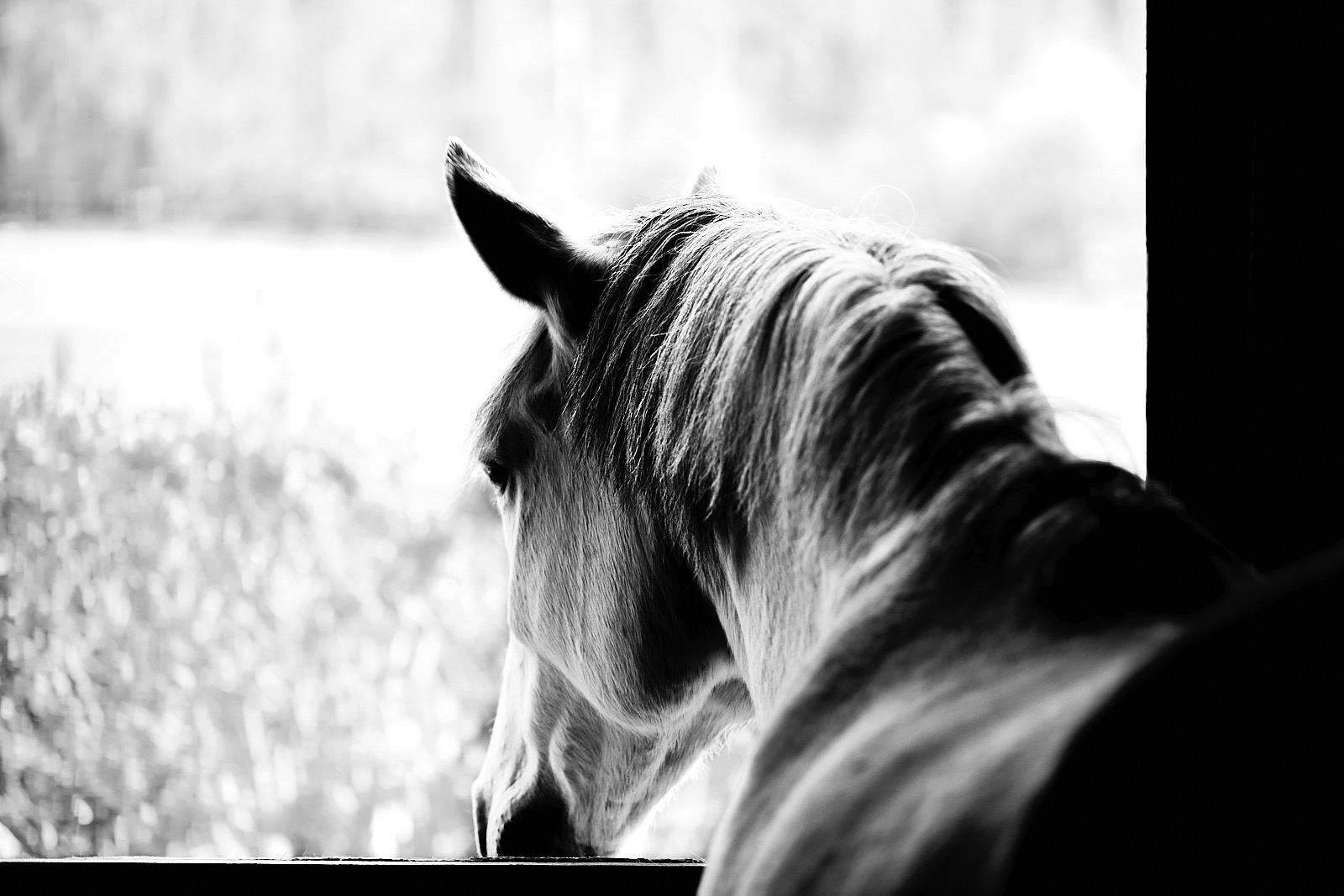Thick smoke darkened the sun and made for an apocalyptic scene.
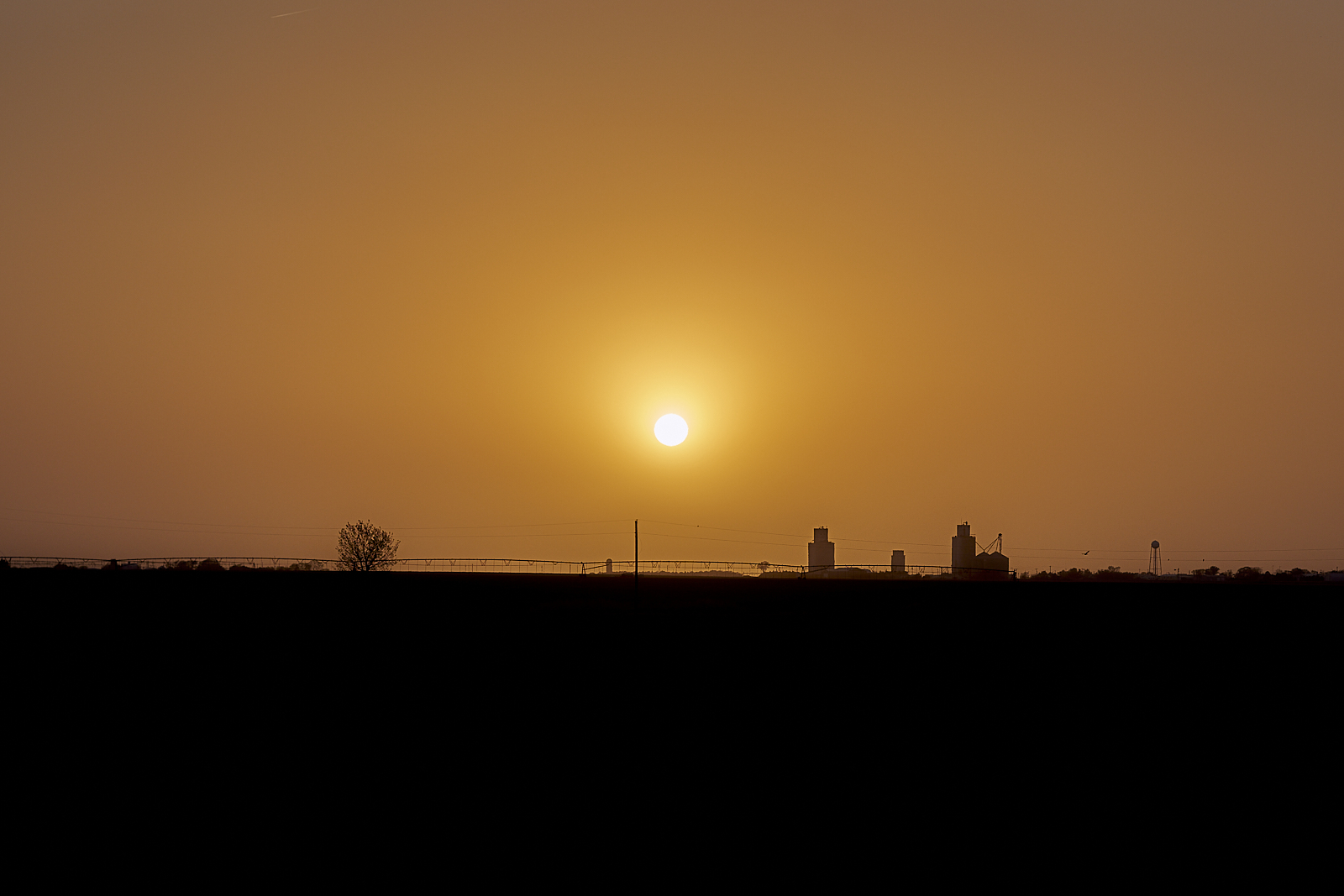
The smoke from fires more than a state away blotted out the sun. Driving west, I couldn’t help but think: The world is burning up; this can’t end well.
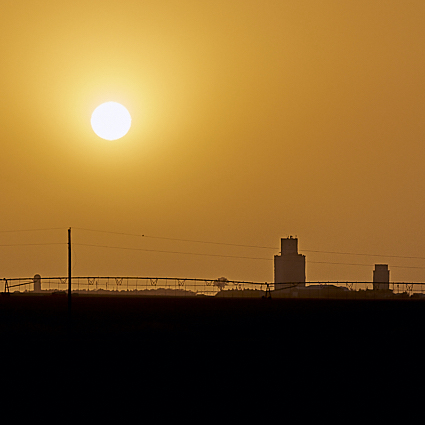
Thick smoke darkened the sun and made for an apocalyptic scene.

The smoke from fires more than a state away blotted out the sun. Driving west, I couldn’t help but think: The world is burning up; this can’t end well.
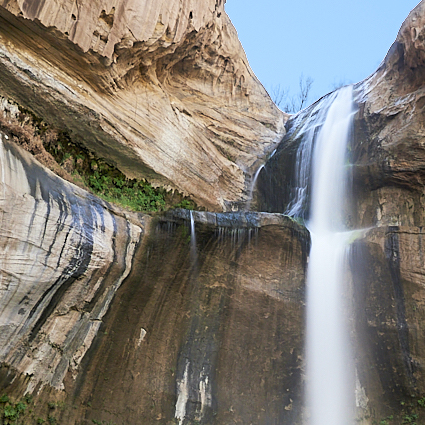
Just as I am rarely alone, despite how far I might venture into the wilderness, I rarely take an original photograph. Sometimes, my photographs are obviously unoriginal (perhaps not entirely cliché but certainly not obscure).
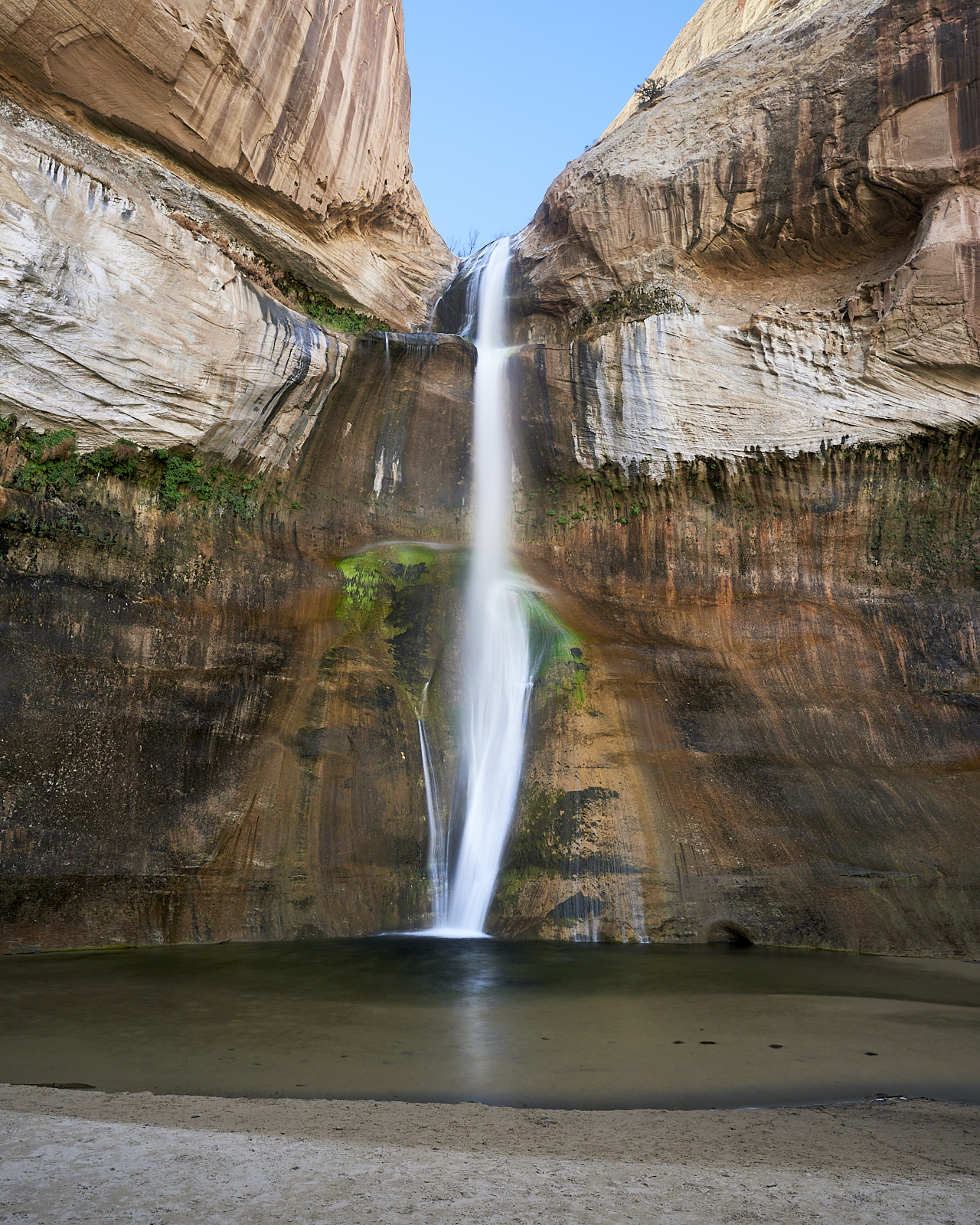
I don’t care if some of my photography looks familiar because other people have been there before me and taken similar photos. In subtle and often overlooked ways, my photo captures a fleeting and irreproducible moment and reflects my particular framing of the scene, just as most previous and subsequent photos will capture fleeting moments and reflect some other photographer’s approach to the scene. And I will always take photos that don’t look so familiar, that reflect my personal eye for something. Such photos tend to work better in collections or as part of a series (see, for example, 52/4).
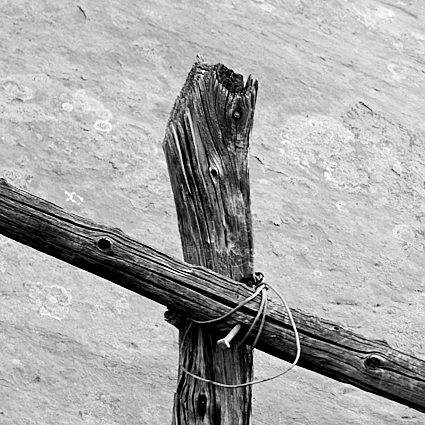
I’ve been this way before. I know where this path leads. But as with each visit, something is different this time. The path is both familiar and foreign, reshaped each season by the forces of nature and the other people who have come this way. While I have found solitude for the moment, the footprints in the gravel remind me that I am far from alone. These remote spaces are haunted by the countless people who have passed through them before, leaving traces of their passing. Petroglyphs, moqui steps, and ruins of structures in alcoves high up on cliff faces — people have been wandering these places for centuries. Far from remote, these canyons and plateaus were home.
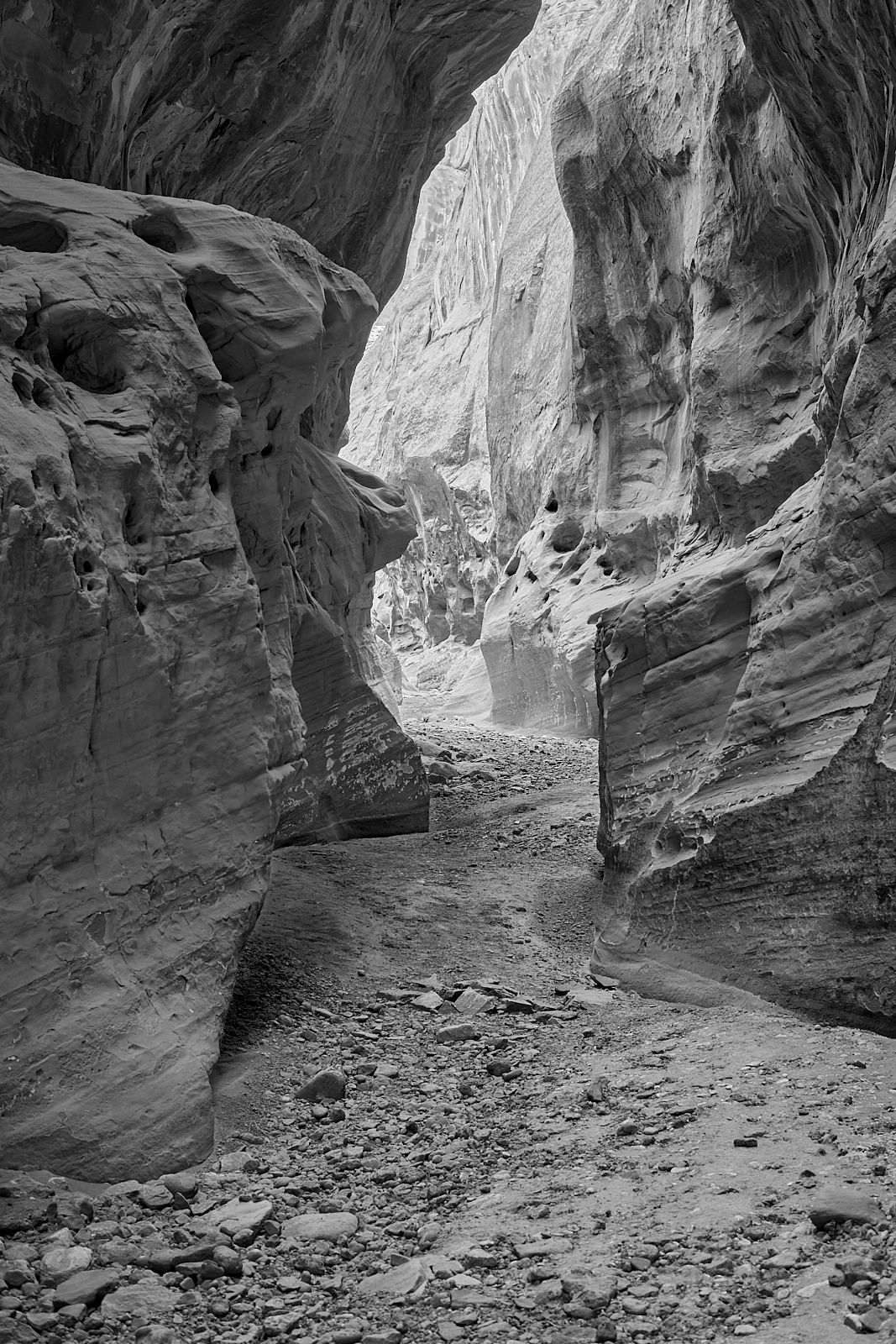
The remnants of our occupation and exploitation are easy to find. Some ancient. Some quite recent. Most now inscrutable — what does “6R” mean and why was it important to carve “6R” into the rock, I wonder.
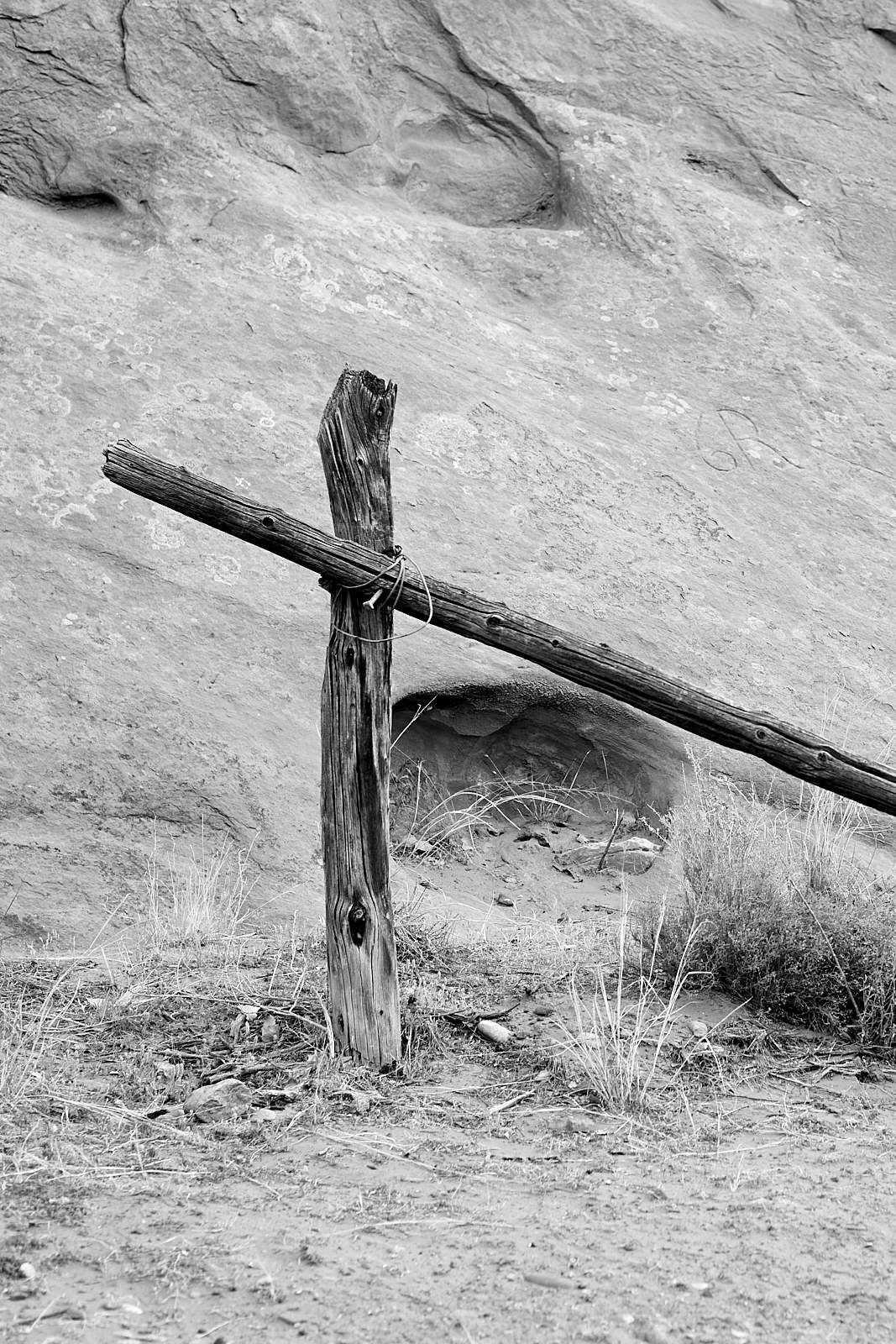
I have been this way before, following behind untold numbers of other people. Although empty each time I pass, the path is well traveled. But this time, something is different. Next time, too, something will be different. Heraclitus’ comments are as applicable to sand and stone as they are to rivers.
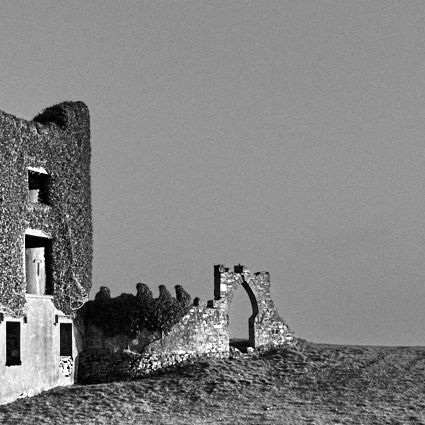
On a recent trip to a foreign land I was reminded of how short our time here is and how silly our efforts at permanence.
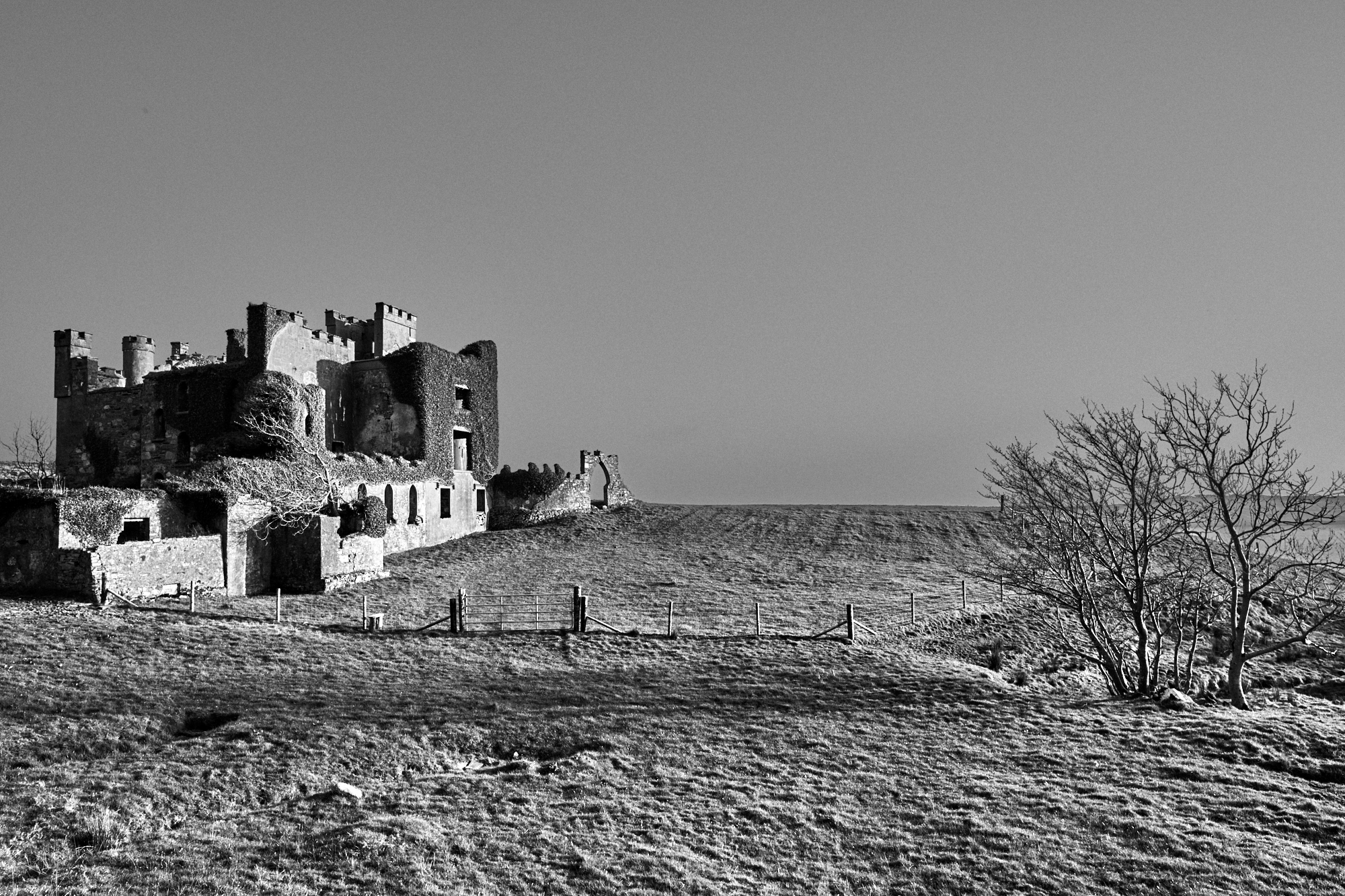
Despite our hopes and aspirations, and fortunes spent, our legacy often falls into ruin. These ruins remind me to make the most of my fleeting time.
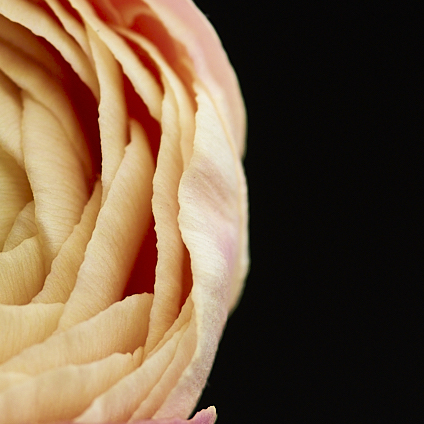
The value, for me, in coming back again and again to similar subjects is finding what I do and do not like. Maybe in the process I improve my technique, but that’s less interesting to me than watching how my aesthetic sensibilities shift. I seem regularly to return to flowers.
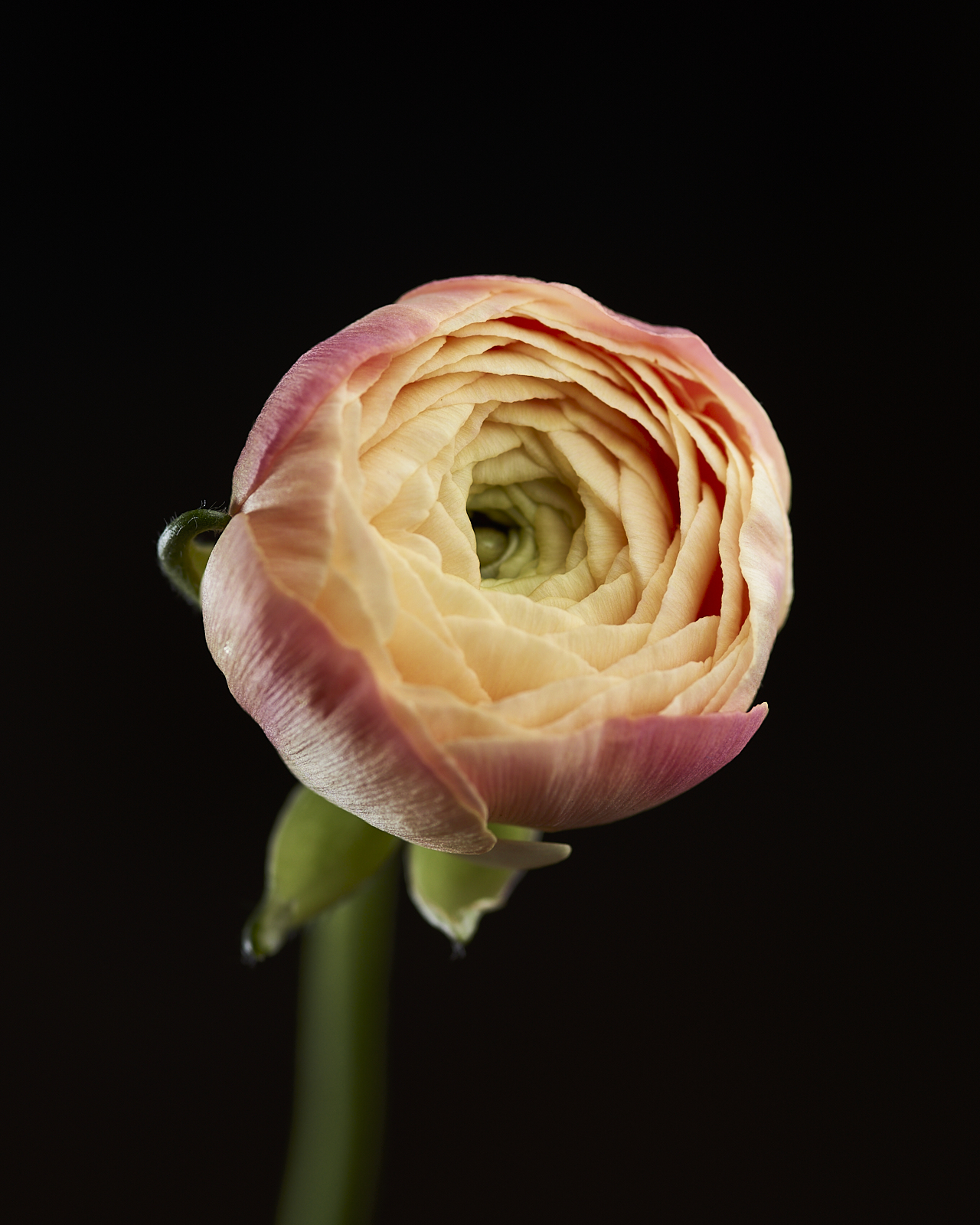
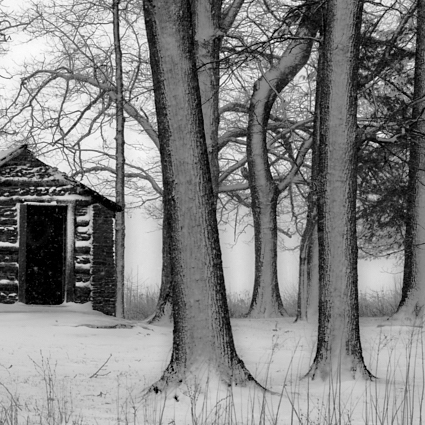
We work incredibly hard to create remnants of the past that will help us imagine what it was like: think of ghost towns and historic monuments. National and state park systems have developed strict guidelines for how to repair “historic” structures, e.g., what materials can be used for public-facing projects (stuff visitors might see) need to be or seem to be authentic to the period (whereas non-public-facing projects can use modern materials). Valley Forge is filled with such structures — fences, cabins, embankments — maintained to give visitors a sense of history.
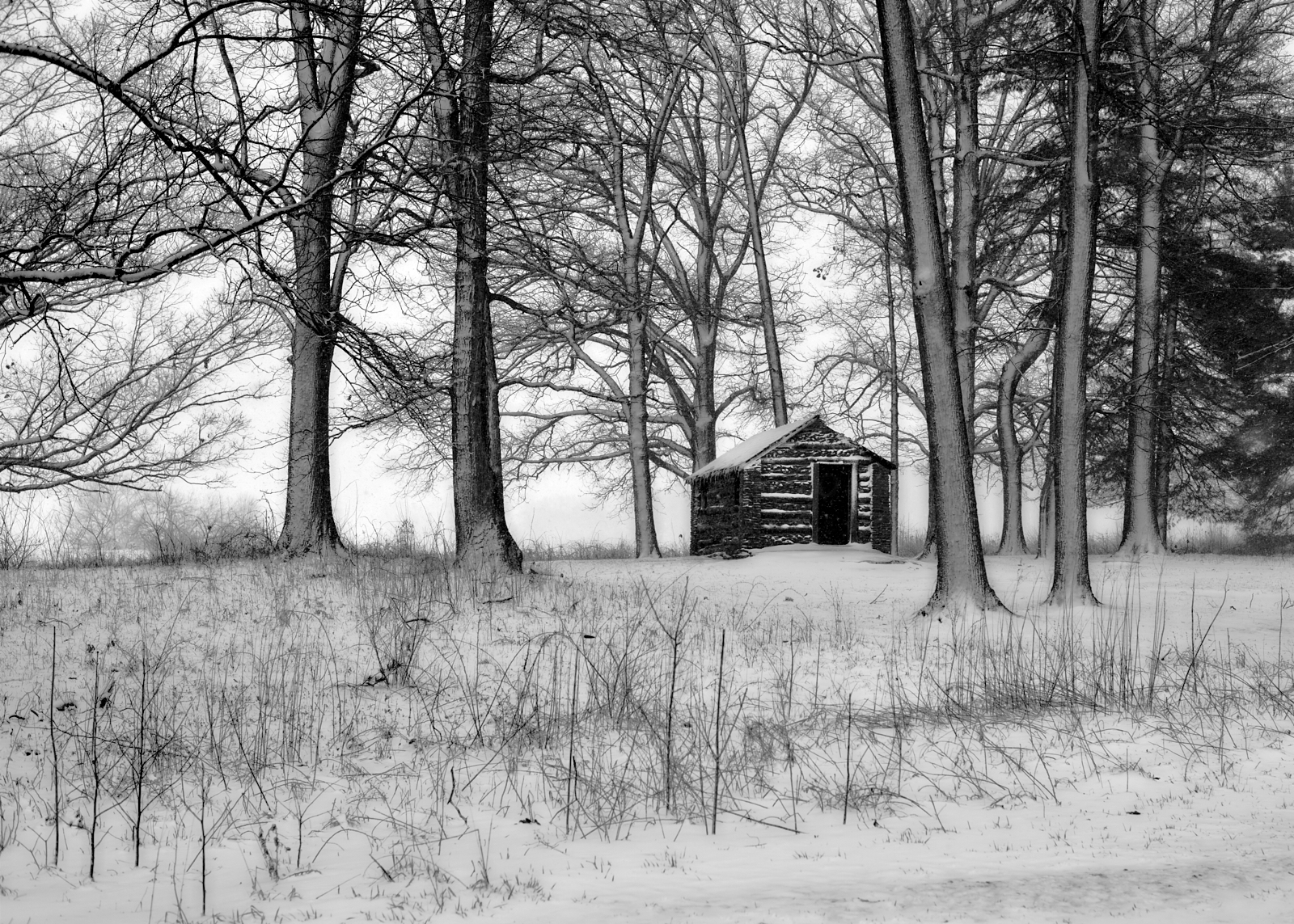
That stormy March afternoon, the quiet, lonely cabin certainly didn’t help me imagine the history of the place — 244 years earlier I suspect it was a relatively loud and lively camp with perhaps as many as 1,500 cabins and more than 10,000 soldiers scattered around the Valley Forge encampment. This cabin doesn’t help me understand what life was like for the Continental Army, but standing there in the blowing snow and listening to the ice cracking on the tree limbs as they flexed and bent in the wind I was able to conjure up an image, a fiction of what it might be like to live in such a place.
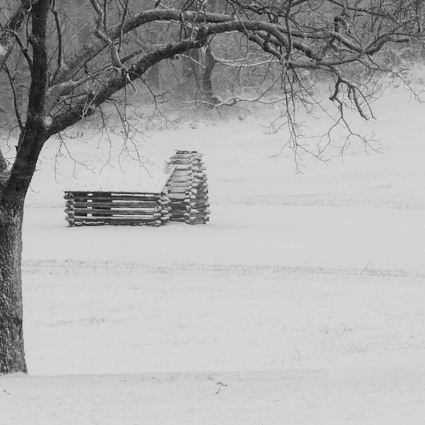
I couldn’t resist the siren calls of a late winter snow storm. promising the chance to wander a desolate world, alone.
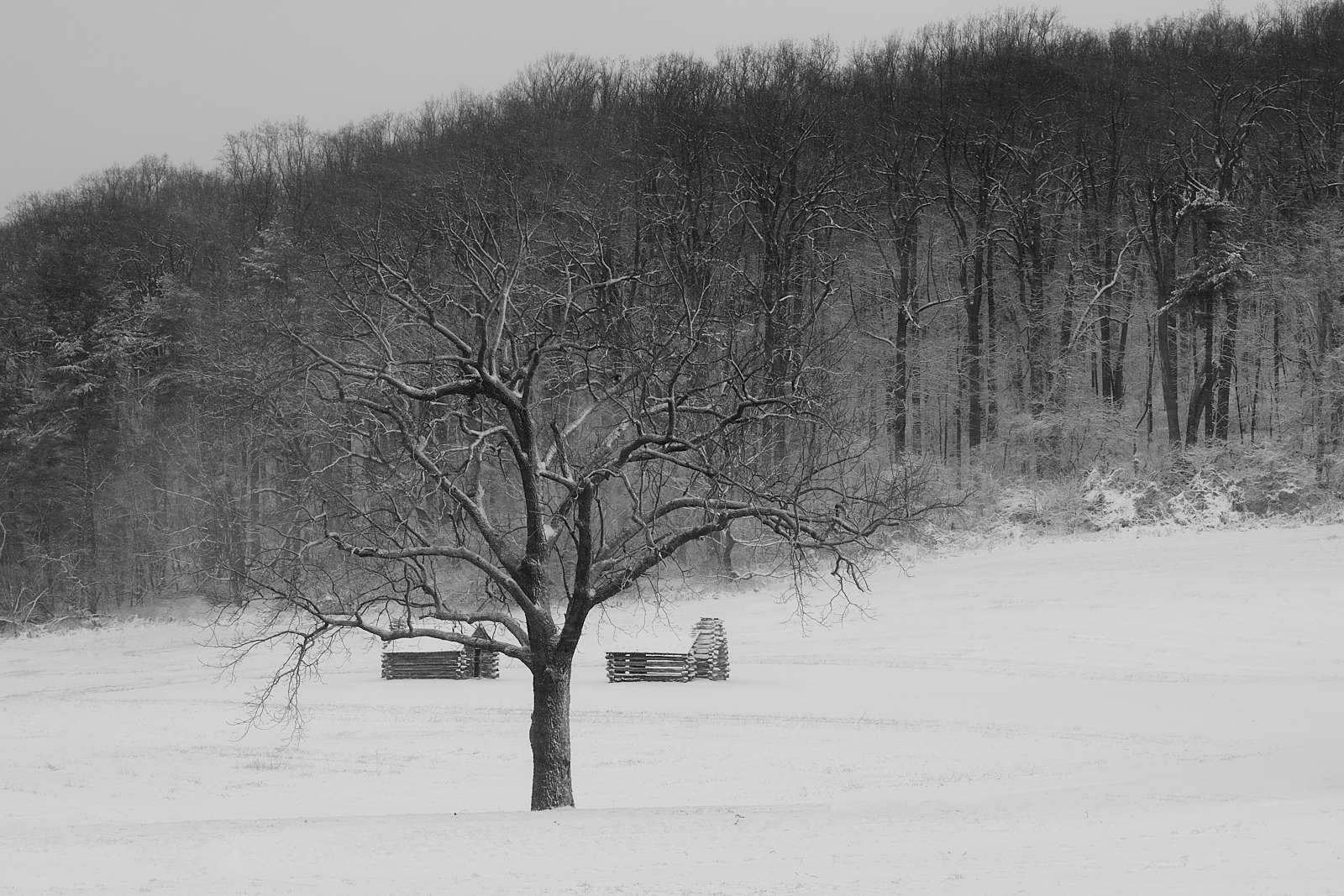
The late winter snow adds to the atmosphere and makes glad for my gloves and heavy coat, luxuries the Continental Army did not enjoy.
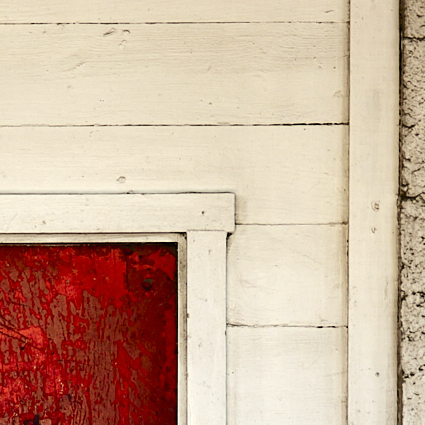
I don’t know why this feed door caught my eye. Maybe it was the contrast between the red door and the white wall — Why did they bother painting the door red? Does the color mean anything or serve any purpose? Seems unlikely. Maybe I was drawn to the traces of use in the worn and chipped paint — How many times has somebody grabbed the handle and opened the door? Why is there a large hole in the bottom?
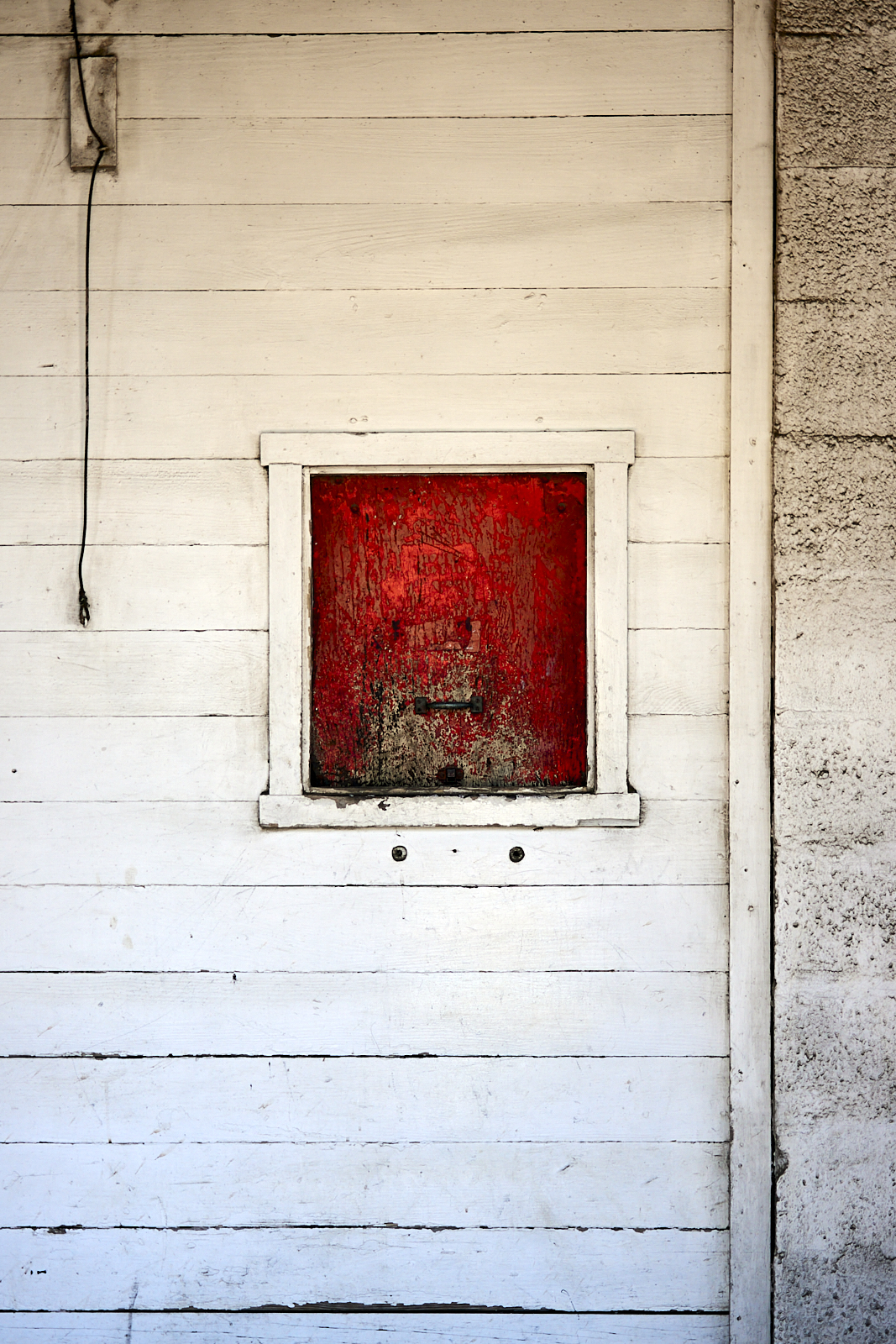
I can’t say why I liked this scene. But I did, and that’s reason enough to take a picture. Not every photograph has to mean something profound or has to tell a story.

A bit late this month, but a new postcard is now available. Wandering around the ruins of Clifden Castle, I couldn’t help but think about how quickly our feeble efforts at permanence decline into ruin. It was a reminder to enjoy the evening, the breeze coming off the bay, the smell of early spring. These moments are all we have. I was fortunate to add them to my “Museum of This I Experienced.”

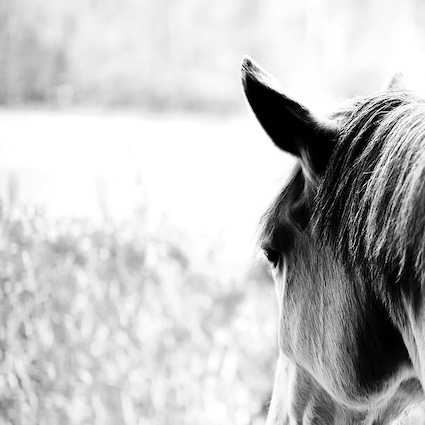
I find something relaxing about taking photographs of horses. There’s no talking and very little effort expended to get them to pose. I tend to watch them for some time, just trying to get a sense of how they are moving in their stalls. I often wonder what they are thinking, as they look out. Sometimes, when they whinny and neigh, I assume they want to go run around with the other horses. Clearly that assumption depends on equating the noises they make with those that I think humans would make when they want out. Sometimes they seem to be restless, but again if I’m being honest I have to admit that I am interpreting their movements as analogous to human actions. Maybe they are perfectly content just gazing out into the fields.
